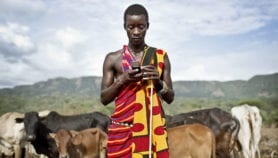Send to a friend
The details you provide on this page will not be used to send unsolicited email, and will not be sold to a 3rd party. See privacy policy.
There is a need to link up the thousands of communications technology initiatives littered across the developing world, but is another UN technocracy the right answer?
The development community and gadget-happy technologists are fond of coining acronyms, though few outside their circles understand what they stand for.
As these mind bogglers go, the newly launched UN-GAID is a double-whammy: an acronym within an acronym. It stands for the United Nations Global Alliance for ICT and Development. And ICT itself is shorthand for ‘information and communication technologies’ — gadgets and processes that help move information quickly and efficiently, allowing people to communicate over vast distances.
The new alliance, inaugurated last week (19-20 June) at an international meeting in Kuala Lumpur, Malaysia, is a special initiative by the UN secretary-general. It is meant to link up existing efforts to harness ICTs — ranging from fixed phones, radio and television to mobile phones, Internet and satellite communication — to reduce poverty and improve lives everywhere.
This shared vision of mobilising gadgets and gizmos to solve real-world problems has given rise to a development subset in recent years known as ICT for development (inevitably inspiring the acronym ICT4D). Arthur C. Clarke, inventor of the communications satellite, suggested a catchier phrase based on what it really entails: taking ICT tools from ‘geek to meek’.
Whatever the label there is certainly a need to link up thousands of isolated initiatives littered across the South, if only to prevent duplication, which happens only too frequently.
But is another UN technocracy, with its multiple layers of governance and its inter-governmental diplomatic niceties, the right answer?
A multitude of UN agencies are already trying to engage ICTs to help generate jobs and incomes, deliver education and healthcare, and pursue other goals.
UNESCO, the UN Development Programme, the International Telecommunication Union, the UN Food and Agriculture Organization, the World Health Organization and the UN’s regional commissions all have ICT programmes of their own. Not to mention most key development donors and major multilateral banks. Then there is the UN ICT Task Force, launched in 2001 with a mandate similar to that of UN-GAID, although UN-GAID is now set to replace the Task Force.
Civil society had realised the problem-solving potential of ICTs years before these large agencies. The forerunners included research institutes, non-governmental organisations and activist groups such as the Association of Progressive Communicators, which linked up social activists and groups by email long before commercial Internet service providers came on the scene.
More recently, the ICT industry has itself started making social investments.
At the UN’s World Summit on the Information Society in 2003-2005, industry leaders, social activists and government officials shared a common platform, although not necessarily the same vision and mission.
The big question is whether UN-GAID can connect these disparate initiatives and enhance their impact. If it fails, it could easily evolve into another self-serving and self-congratulatory bureaucracy competing for limited resources, media attention and practitioners’ time.
We will have to wait and see. We should give UN-GAID six months to prove its worth. This is not long for a new UN agency, but it represents a long time in the fast changing world of ICTs. However, the initial signs are not very promising.
C for communication
Last week’s Kuala Lumpur meeting, for example, opened with a high-powered panel of speakers addressing national ICT strategies for achieving the Millennium Development Goals — the globally agreed blueprint for reducing poverty and improving lives by 2015. Their remarks echoed the development community’s current obsession with putting computers in classrooms and connecting rural areas to the Internet.
 |
| Rural women in Hunza, northern Pakistan connect to the Internet |
It took Abdul Wahid Khan, UNESCO assistant director-general for communication and information, to bring us back down to earth. “The ‘C’ in ICT stands for communication, not computers,” he reminded everyone. “As far as marginalised communities are concerned, it doesn’t matter what tool or gadget is used. They need to access information and be able to express themselves.”
Khan said the only personal ICT tool that most marginalised groups can afford to own individually is the transistor radio. Yet most ICT for development projects still ignore this pervasive ICT.
“Don’t transplant technologies just for the sake of counting villages or schools as being connected,” Khan urged. “We must invest more resources in locally generated and locally relevant content for radio and television that already have vast outreach.”
This was also emphasised at the World Electronic Media Forum, which brought together the world’s broadcasters in Switzerland in 2003 and Tunisia in 2005. “The future is not only online,” their declaration noted.” Especially for the developing countries, traditional radio and television will continue to be the most effective way of delivering high quality information on, for example, healthcare and education, of combating illiteracy, of debating issues of general interest and of promoting a culture of peace.”
Analogue or digital? Wired or wireless? Such distinctions hardly matter to the large sections of humanity not currently part of the global conversation and this should be acknowledged as such by development practitioners. Tinkering with a few digital projects, many of which never progress beyond the ‘pilot stage’, will neither popularise ICTs nor solve everyday problems.
In fact, using ICTs for development should be part of a broader strategy to gradually integrate ICTs into our societies. Legislation, policy formulation and slick advertising alone cannot accomplish this. ICTs have to prove their worth in society and become gradually accepted as adding value to our living and working conditions.
So how can we assess the public utility and relevance of an ICT tool? We should begin by asking a few basic questions, such as: does it put more food on our tables? Does it add more money to our pockets? Does it help us interact with government? Does it save time and effort otherwise spent travelling to and from work? Does it support the cultural and personal needs of individuals and groups? Finally, is it affordable, user-friendly and widely available, with minimum entry-level barriers?
Adding value
One ICT that does well when these questions are asked of it is the mobile phone. In most parts of Asia, mobile phones now cut across social, class and economic divides. It has gone from being an expensive elitist gadget when it was first introduced to widespread use for a range of purposes. Costs have come down as monopolies crumbled.
Yet interestingly, not a single donor or UN agency invested ‘development aid’ in promoting the mobile phone — it was purely a market phenomenon.
Conversely, it is aid money that sustains most ‘small-is-beautiful’ type ICT4D initiatives across Africa, the Asia-Pacific region and Latin America. The telecentre fever sweeping the developing world is the latest manifestation. Taxpayers in the North keep these numerous projects on life support, in the belief that they help the Southern poor.
But do they? Many such projects do more harm than good. There is a danger that technological tools can distort priorities and mesmerise decision-makers into believing that gadgets can fix all problems. But a multimedia computer with Internet connectivity is of little use in a school with leaking roofs or no roof at all. The top priority in such cases is to have the basic infrastructure and adequate teachers.
Admittedly, there is a certain allure in images of rural school children playing with a computer, a Buddhist monk using a mobile phone, or tribal people trying out a palm-top. They make the development community believe that they are making a difference. Such images also they look good on the printed posters and brochures that flood every international meeting on ICTs, digital media notwithstanding.
UN-GAID faces a clear choice: indulge in more of the same to keep everyone happy but achieve little — or ask tough questions about how much ‘added value’ ICTs really bring to solving real world problems. It must also advocate clear, strategic thinking about how ICTs can help achieve the ambitious Millennium Development Goals by 2015.
As the new kid on the block, UN-GAID can courageously point out that some of the long-standing gadget-happy ICT4D projects have failed to make a difference.
But it must be careful to avoid the same trap in time to come.
Nalaka Gunawardene is director and CEO of a regional organisation that uses television, video and new media for development education. He is also a trustee of SciDev.Net. He can be reached at: [email protected]













